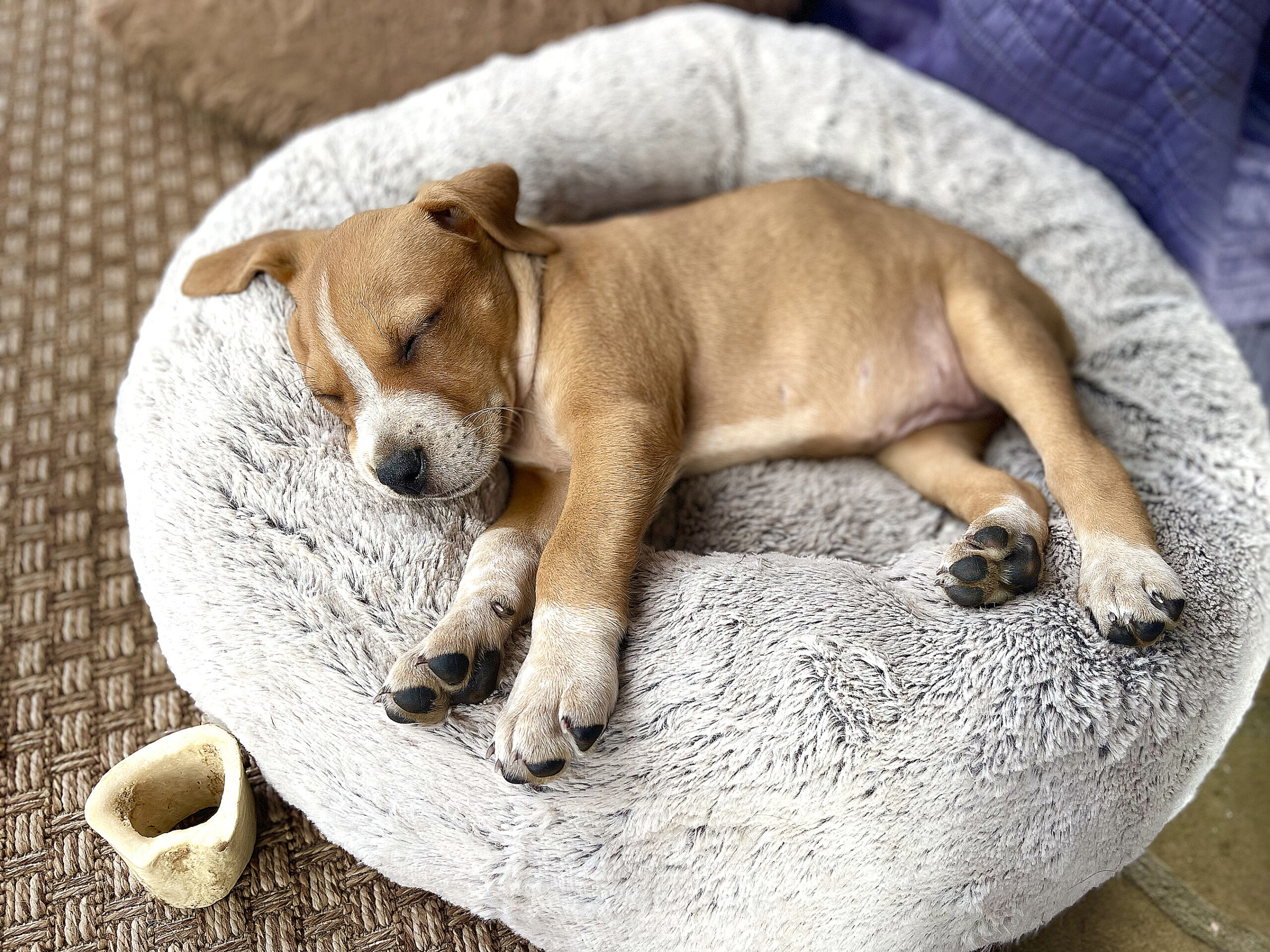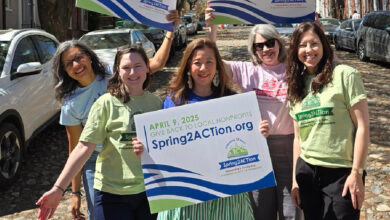
Alexandria, VA – New owners often come to me and confess: “I know it’s wrong, but the puppy sleeps in bed with us.” They’re shocked when I smile and tell them that’s what we do at our house, too.
I’ve spent countless hours watching how puppies naturally sleep — we’ve fostered more than 200 of them — and I can tell you this: it is almost never alone. They are snuggled into the sweetest of family piles, inhaling each other, burrowing, stretching, and sighing.
Then one day, the puppy goes “home” with his new humans. They are kind and responsible, and they try to follow expert advice when they take that confused puppy and stick him into a crate, alone, for hours, at night, with nothing to distract him. The puppy has nothing to do but miss his (real) family.
Of course he cries!
Benefits of Co-Sleeping
When we have a pup just separated from the litter at our house, we do our best to recreate that cozy sleep pile by popping the puppy between us in bed. After a disorienting first day without littermates, you can almost feel the puppy’s relief as they snuggle in.
There is no crying, which means we humans get more sleep. Sure, we wake from time to time when the puppy re-adjusts, burrows in under an arm, and perhaps licks a face. But seriously? Those moments are delicious. Don’t let stern advice from strangers on the internet deprive you of one of the sweetest times in the world. Life’s short. Let yourself have the 3:00 am puppy snuggle.
Won’t They Pee in My Bed?
A big objection to this approach is the fear that the puppy will pee in the bed. After all, when folks using a crate take the crying puppy out at 2:00 am, she always pees. They conclude that’s what woke her. Maybe. But more likely, she was crying because she was lonely. How do I know? Because pups in our bed regularly “hold it” from 11 to 5. Here are the keys to success:
- No food after 7:00 pm, and no water after 8:30. (Maybe a sip, but no big glugs.)
- Have a 15-minute adventure outside just before bed at 11. Not a quick step outside, but a motion-filled sniffari or play session. (Motion encourages pees and poops.)
- Don’t offer an easy self-dismount from the bed (like an ottoman) because the fact that the pup feels confined to that space makes the bed function a bit like a crate. The pup doesn’t want to pee where he “lives.”
Mind you, once the pup fully awakens in the morning, it is time to sprint into action. A delay could mean the pup tries to get off the bed (dangerous if your bed is high) or goes ahead and pees out of desperation. Jump out of bed — no time for your own bathroom break! — pick up that puppy and carry him outside because the motion of walking will mean “game over.”

Mine Won’t Settle Down!
A rookie mistake in co-sleeping is introducing that spot only moments before you expect the pup to settle down. The pup will be filled with questions. “A new place? What happens here? What do I smell?” There will be no sleep happening any time soon.
Instead, take the pup into the bedroom a few times during the day. Let her explore and hang out on the bed with a toy. This will demystify the space. Then, when it’s bedtime, turn out the lights, stop talking, turn on a sound machine, and give the pup a stuffed animal to chew. Pup should be asleep in five minutes.
But I Don’t Want to Sleep with a Grown Dog!
Folks are often open to sleeping with a little puppy, but sharing the bed with a 70-lb grown dog is a hard no. They worry that once that barrier is broken, there’s no going back — but that’s not true! You can transition a dog to crate sleeping after a few weeks or months. By then, something essential will have shifted: your pup will feel happy and safe in his new family.
Perhaps you’re thinking, if she’s going to be sleeping alone in her crate soon, why not just bite the bullet and do it from the get-go? My answer is simply … empathy. Just because you know it will all be okay doesn’t mean the puppy does. When it comes to a very long night spent alone at the exact moment the pup has gone through the most shocking transition of her life, I’m always going to err on the side of giving emotional comfort.
Alexandria dog trainer Kathy Callahan (CPDT-KA, LFDM) loves to help people and their dogs live more happily together. For more information, go to puppypicks.com. And check out Kathy’s new book, Welcoming Your Puppy from Planet Dog.
ICYMI: Adopt a Pet in Alexandria: Meet Bigwig and Clover




